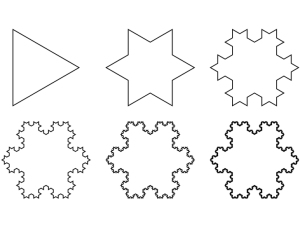Double pendulums are pretty awesome. Funnily enough, they’re pretty much what they sound like – a pendulum, with another one attached to the bottom. But the cool part is come from their twin nature, but the type of motion they exhibit – chaotic motion.
People often confuse chaotic behaviour with random behaviour; random behaviour has no deterministic qualities (so you can’t tell from previous physical conditions what is going to happen), whereas chaotic behaviour is actually deterministic, meaning it is possible to predict. The difference between chaotic deterministic behaviour and regular deterministic behaviour, however, is that tiny, tiny changes in initial conditions in a chaotic systems can bring about massive changes, unlike a normal deterministic system, where tiny changes in initial conditions will bring about tiny changes overall. You may have heard of something called “the butterfly effect” – where a butterfly flapping its wings on one side of the world can cause a hurricane on the other. This is a chaotic system, as even something as small as the miniscule breeze from a butterfly flapping its wings can cause massive changes in weather, which may at first appear random but actually do have a deterministic cause.
The fact that double pendulums are chaotic is that go can set two different pendulums up to be almost exactly the same, but not quite, and after a period of time they’ll be totally different from each other. It also makes the path a double pendulum traces out amazingly beautiful and crazy, almost like those geometric roses, or the drawings you made using spirographs as a kid.

There are chaotic systems everywhere in nature, from geology to robotics, and biology to economics. Chaotic systems can be very difficult to detect, because they can appear so similar to random systems unless you measure them closely. Because of this, there are certain traits of dynamical systems that scientists will look for to see if a system is chaotic. These are things like the fact that there isn’t any periodic (repetitive) behaviour in time, but there is in something called phase space, which is a bit like the variation of the speed of the pendulum with its displacement. Also, the fact that tiny initial differences between two pendulums will grow exponentially with time. There are other chaotic properties, like the fact it’s nonlinear, and that it must have at least three independent, first-order autonomous differential equations which describe it, but those are harder to explain within bringing up the ridiculously long and complicated equations of motion, which are what you use to describe how the pendulum moves (funny that, what with their name).
Chaos is such a wonderful thing, because at first it appears completely crazy, and random, and completely unordered. However, if you have the ability to actually look close enough, it’s perfectly deterministic, and not at all unpredictable. A bit like so many messy things in life, if you have the patience and the time to look for the source, and untangle the enigma, you’ll be able to to decode the whole thing, and know what’s actually going to happen.
Okay, so this week, I’ve been very busy with my summer project – building a simulation of a double pendulum. Double pendulums are pretty damn cool, exhibiting chaotic behaviour and being hypnotising to watch. So, I thought it’d be more interesting to write a quick thing about them (and a lot easier for me, given that I’ve got my final report deadline on Monday, so am spending most of my time thinking about them), and also show you guys some of the simulations I’ve built. It might be a little bit more mathsy that usual, but I’ve tried to keep it so that the majority of it is all understandable.
This does mean that I don’t actually have a shoot to go with this piece, and given that I’ll be working on the project till the end of Monday, I probably won’t have time to do one. Don’t despair, though, I’ll still be giving you pretty pictures! You like that one gif up there? Well, on Wednesday you’ll get to see gifs of double pendulums on all the different planets and more – it’s pretty cool. My favourite one is the moon – it’s much slower than the pendulum on Earth, and really relaxing to watch.
Also, I must give credit to my amazing project partner, Kiyam Lin, who pretty much did all the confusing code whilst i just sat there learning all about chaos. Everything would have been far more confusing without him.




